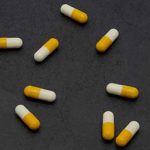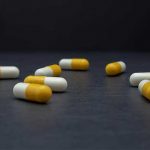Most stimulants are classified as schedule II controlled substances by the Drug Enforcement Administration (DEA), which means they have a high potential for abuse and can lead to psychological and physical dependence.
If you abuse illicit or prescription stimulants and build up a dependence, when you try to stop use, withdrawal symptoms are likely to occur.
Withdrawal symptoms can range from mild to severe, but unlike alcohol or opioid withdrawal, the symptoms are likely not life-threatening.
Stimulant medications are generally prescribed to treat attention-deficit hyperactivity disorder (ADHD) and narcolepsy, but illicit stimulant drugs can be bought off the street as well.
Stimulants work by increasing the neurotransmitters dopamine and norepinephrine in the central nervous system, which raises alertness, focus, and attention.
Common stimulant drugs include methamphetamine, amphetamines like Adderall, cocaine, and methylphenidates like Ritalin and Concerta.
Stimulant Withdrawal Symptoms
If you quit stimulant drugs after abusing them for a long period of time, you’re likely to experience withdrawal symptoms.
These symptoms can range from physical to psychological symptoms and can include:
- fatigue
- depression
- increased appetite
- feelings of apathy
- drug cravings
- lethargy
- nausea
- stomach aches
- cramping
- vomiting
- anxiety
- slow heart rate
- decreased blood pressure
- agitation or irritability
- insomnia or excessive sleep
- chills
- lack of focus
- psychosis (hallucinations, delusions, suicidal thoughts)
Stimulant Withdrawal Timeline
Several different stages are part of the stimulant withdrawal timeline. While some symptoms of withdrawal occur immediately, others don’t show up for days or weeks.
How long your symptoms last differs from person to person. It depends on your genes, your overall physical and mental health, the type of stimulants you use, and your family history of substance abuse.
However, the average withdrawal timeline for stimulants looks like this:
1-3 Days After Last Dose
A few hours to a day after your last dose, certain side effects may start to show up, including anxiety, agitation, and strong drug cravings. After this initial crash, you’ll likely feel exhausted and depressed and may experience eye twitching, irritability, paranoia, and delusions.
4-10 Days
This stage of withdrawal likely involves extreme exhaustion and fatigue, but insomnia can occur as well. After 7 days, the symptoms may start to subside but cravings and depression may increase.
11-17 Days
At this late stage of withdrawal, insomnia may still be an issue. Depression and mood swings may also persist and may need separate treatment to deal with them.
18+ Days
The worst is likely at an end at this point. Any remaining withdrawal symptoms are considered post-acute withdrawal symptoms (PAWS). They are likely mild and will continue to fade with time. Depression and cravings are likely the final symptoms to subside.
Stimulant Withdrawal & Detox
Detox programs for stimulant withdrawal may be recommended because they can make the withdrawal process more bearable. Since some withdrawal symptoms can be intense, quitting “cold turkey” is not recommended.
Medical detox is one of the most common forms of detox support and can occur in both inpatient or outpatient settings.
Inpatient detox involves around-the-clock medical care from healthcare providers. Staff may provide medication that can reduce the severity of the withdrawal symptoms, and these medications can include sleep aids or antidepressants.
Stimulant Addiction Treatment
After you complete stimulant detox, your treatment team can refer you to either an inpatient or outpatient treatment program to treat addiction and ensure you stay on your recovery journey.
These substance abuse treatment programs can include behavioral therapy, support groups, and treatment for co-occurring mental health disorders, if necessary.
If you or a loved one lives with stimulant addiction or another type of substance use disorder, Northeast Addiction Treatment Center is here to help. We provide a variety of outpatient treatment options. Learn more by contacting us today.
Sources
Written by
Northeast Addition Editorial Team
©2024 Northeast Addition Center | All Rights Reserved
This page does not provide medical advice.



